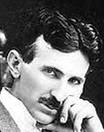
William Crookes invented the Crookes tube – an electrical discharge tube – around 1870, which cathode rays were discovered in.

RontgenWilhelm Röntgen came across X-rays in 1895 while working with Crookes tubes. His first paper on X-rays (the first ever) was titled “On a new kind of ray: A preliminary communication” and was submitted to a medical society journal. Due to his discovery, X-Rays are often called Röntgen rays in many languages. The medical uses of the X-Rays came about when Röntgen saw a picture of his wife's hand taken with the rays.

During the era of 1896-1904, William Herbert Rollins contributed several discoveries related to protection of radiation, such as various ways to limit the dosage a patient would experience. He also found that x-rays could kill a guinea pig fetus, leading to worry that the same could effect pregnant women in the same way.

Thomas Edison worked with Clarence Dally for awhile researching x-rays around 1896, and eventually he invented the fluoroscope which became widely used for X-ray testing. He stopped working with the around 1903 after Dally's death to cancer.

Tesla's main contribution to the science of radiology came when he described how to safely build and operate X-ray equipment. At the same time, he alerted the scientific community to the biological dangers of X-ray exposure.